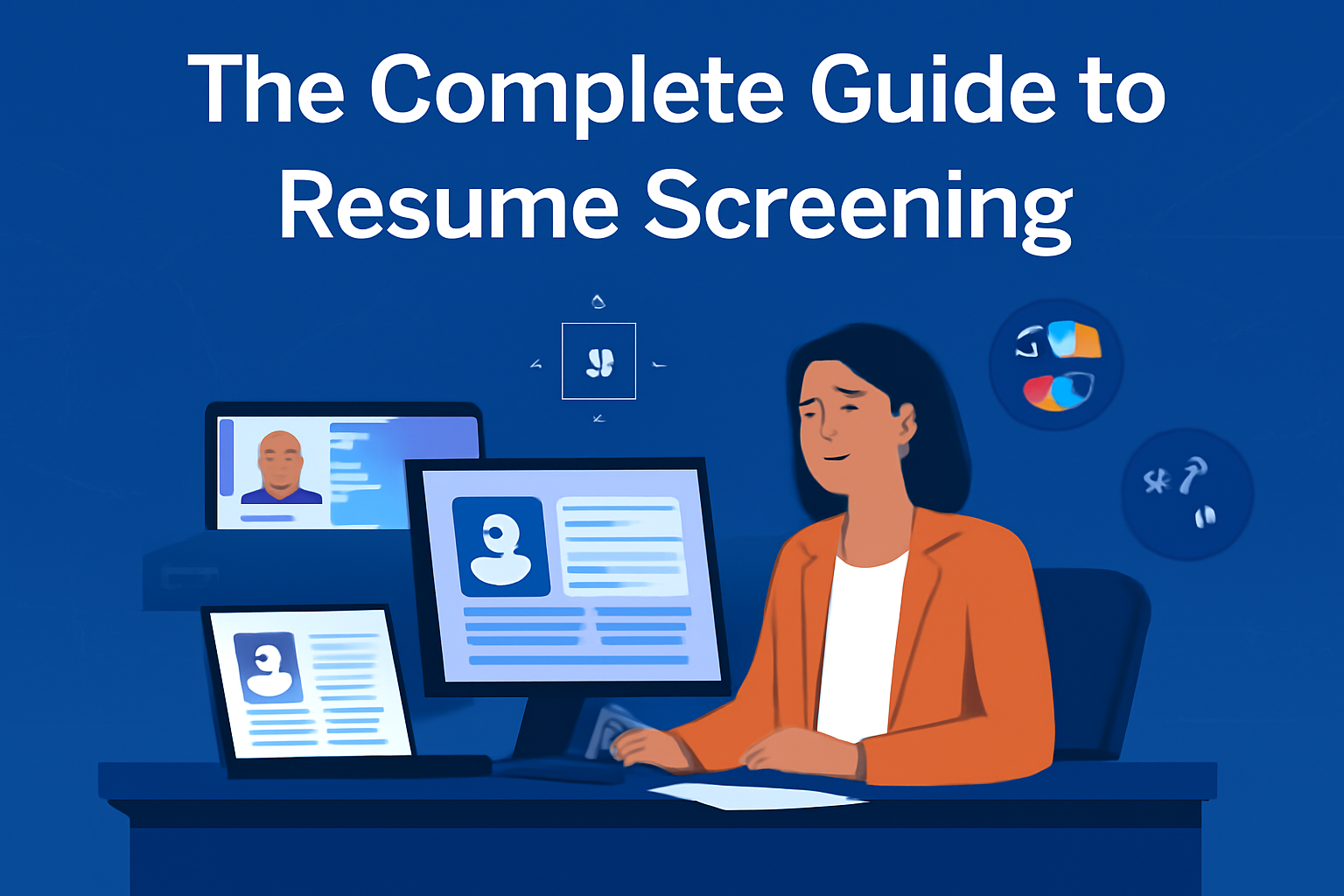Recruiters and hiring managers today face an overwhelming challenge: sorting through hundreds or even thousands of resumes to find the best-fit candidates. This crucial early step in the hiring process — resume screening — can make or break recruitment success.
Manual screening is tedious, prone to error, and often biased, leading to inefficiencies and missed opportunities. Fortunately, technology has stepped in to revolutionize resume screening with AI-powered tools that enhance accuracy, speed, and fairness.
In this guide, we’ll explore everything you need to know about resume screening — from traditional methods to advanced AI-driven solutions — and show why RChilli’s AI Resume Parsing technology is the trusted global choice for recruiters seeking a seamless, multilingual, and powerful resume screening solution.
What is Resume Screening?
Resume screening is the process of reviewing job applications to identify candidates who best meet the job requirements. It filters out unqualified applicants and shortlists the most relevant profiles for further evaluation.
Traditionally, recruiters manually reviewed each resume, which is time-consuming and subjective. Today, resume screening is increasingly automated with Applicant Tracking Systems (ATS) and AI-powered software that analyze resumes at scale.
Resume screening is vital to:
-
Speed up hiring timelines
-
Ensure better candidate-job fit
-
Reduce recruiter workload
-
Improve hiring quality and reduce turnover
The Resume Screening Process: How It Works
Resume screening typically involves the following steps:
-
Initial Filtering: Sorting resumes based on keywords, skills, experience, and education.
-
Detailed Evaluation: Examining candidates’ qualifications more closely against job descriptions.
-
Shortlisting: Selecting resumes that meet or exceed the criteria.
-
Interview Scheduling: Moving shortlisted candidates forward for interviews.
Recruiters use tools like ATS and AI resume parsers during these steps to automate keyword matching, rank candidates, and organize data.
Challenges in Resume Screening
Despite its importance, resume screening poses several challenges:
-
High Volume: Recruiters can be overwhelmed with thousands of resumes per job opening.
-
Manual Errors: Human fatigue leads to overlooking qualified candidates.
-
Biases: Unconscious bias can affect fair screening.
-
Formatting Variability: Resumes come in diverse formats that can confuse automated systems.
-
Multilingual Candidates: Global hiring requires parsing resumes in multiple languages.
-
Data Silos: Lack of integration between screening tools and HR systems slows workflows.
These pain points result in inefficient hiring and potentially losing top talent.
The Role of Technology in Resume Screening
Technology has transformed resume screening with:
-
Resume Screening Software: Tools that automate keyword search and filtering.
-
AI and Machine Learning: Advanced algorithms that understand context and semantics.
-
Resume Parsing: Extracting structured candidate data from unstructured resumes.
-
Multilingual Support: Parsing resumes in over 30 languages to support global hiring.
These innovations reduce human error, improve candidate matching, and accelerate recruitment cycles.
Best Practices for Effective Resume Screening
To optimize resume screening:
-
Define clear and job-specific screening criteria.
-
Leverage AI-powered resume parsing to extract rich candidate data.
-
Integrate screening tools with ATS and HRMS for smooth workflows.
-
Train hiring teams on recognizing and mitigating biases.
-
Use semantic search to go beyond simple keyword matching.
-
Regularly review screening parameters for continuous improvement.
Advanced Features in Resume Screening Tools
Modern resume screening solutions offer:
-
Contextual Understanding: AI interprets the meaning behind skills and experiences.
-
Semantic Analysis: Improves relevance by recognizing synonyms and related terms.
-
Real-Time Analytics: Track screening effectiveness and candidate pipeline metrics.
-
Bulk Resume Processing: Efficiently handle large applicant volumes.
-
Integration with Video Interview Platforms: Combine resume data with interview assessments.
The Future of Resume Screening
Emerging trends indicate that:
-
AI will play an increasing role in automating entire recruitment workflows.
-
Screening will become more personalized with predictive analytics.
-
Multimodal assessments combining resumes, video, and social profiles will become standard.
-
Greater focus on diversity and inclusion will shape screening algorithms.
Frequently Asked Questions (FAQs)
What is the purpose of resume screening?
To quickly identify candidates who best match the job requirements, improving recruitment efficiency.
How do automated resume screening tools work?
They use algorithms to scan resumes for keywords, skills, and experience, ranking candidates accordingly.
Are there biases in resume screening?
Manual and poorly designed automated screening can harbor biases, but AI tools like RChilli’s parser are built to minimize them.
How can I improve my resume to pass screening?
Use keywords from the job description, maintain clear formatting, and highlight relevant skills and experience.
What are the benefits of using resume screening software?
Faster processing, reduced errors, better candidate matching, and scalable handling of applications.
Why Choose RChilli for AI Resume Screening?
When it comes to AI-driven resume screening, RChilli stands out for its:
-
Multilingual Resume Parsing: Supports over 30 languages, essential for global recruitment.
-
High Accuracy: Uses advanced AI and NLP to extract detailed candidate information.
-
Seamless Integration: Works with leading ATS and HRMS platforms like Oracle, SAP SuccessFactors, and Salesforce.
-
Security Compliance: ISO 27001:2022 certified, ensuring data privacy and compliance.
-
Custom Taxonomy Support: Tailors parsing to industry-specific roles and qualifications.
RChilli’s AI-powered Resume Parser empowers recruiters to automate resume screening efficiently and fairly, reducing time-to-hire while improving candidate quality.
Conclusion
Effective resume screening is essential for competitive hiring, but traditional methods are no longer sufficient. Embracing AI-powered solutions like RChilli’s Resume Parser enables organizations to overcome screening challenges, scale globally with multilingual support, and hire the best talent faster.
Explore how RChilli’s AI resume parsing can revolutionize your recruitment process by visiting their detailed blog here: A Complete Guide to Resume Screening.


